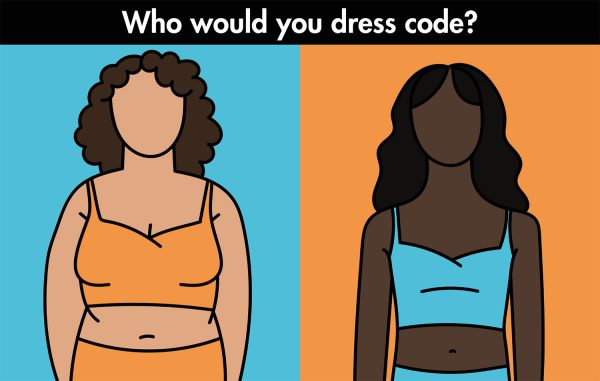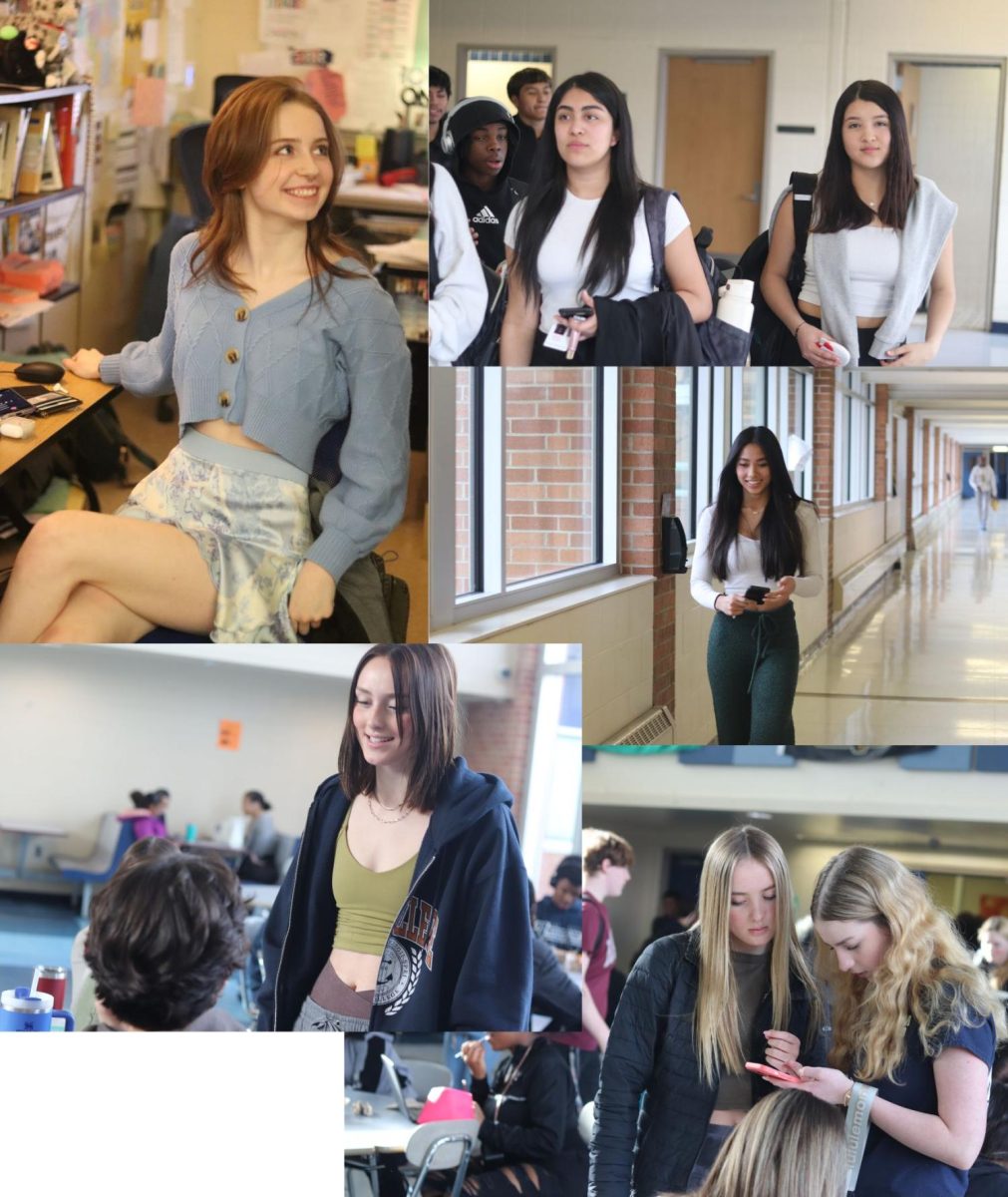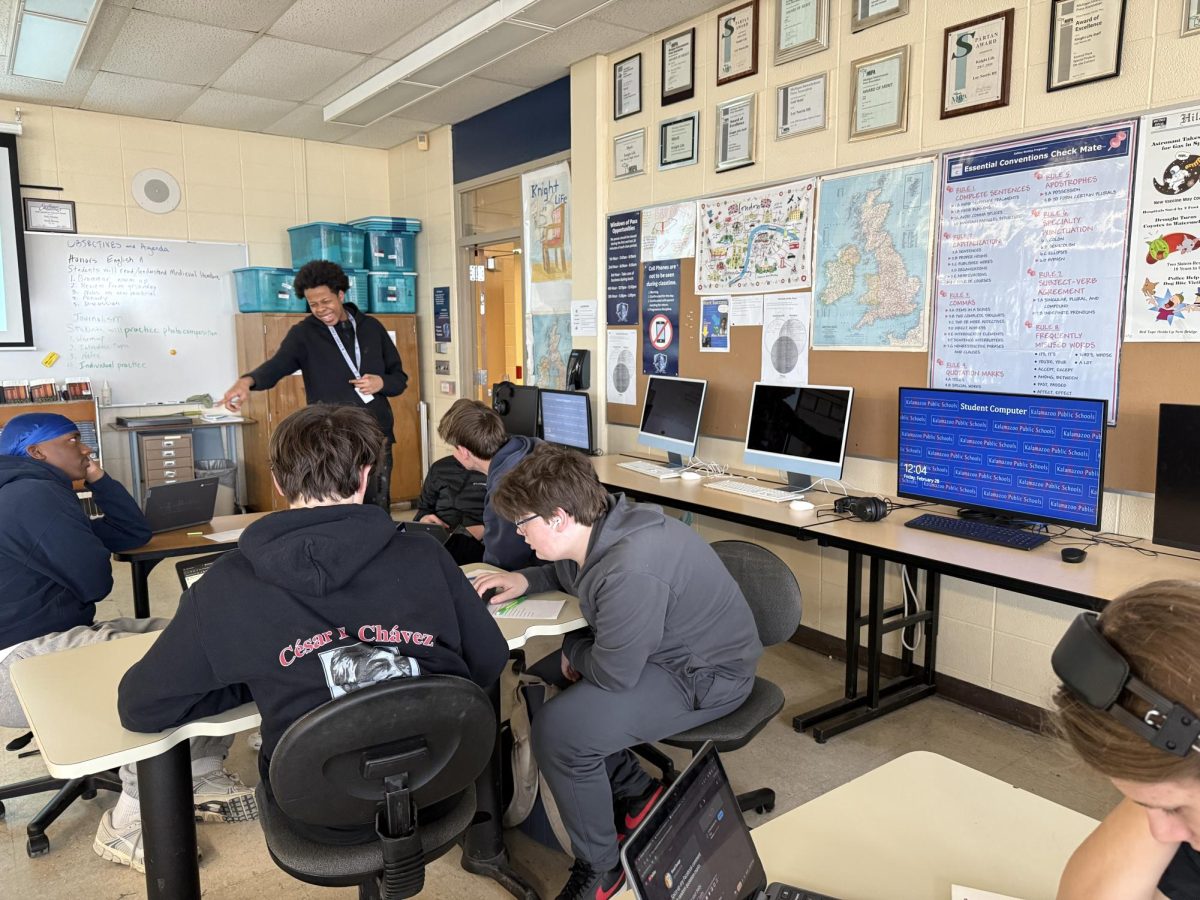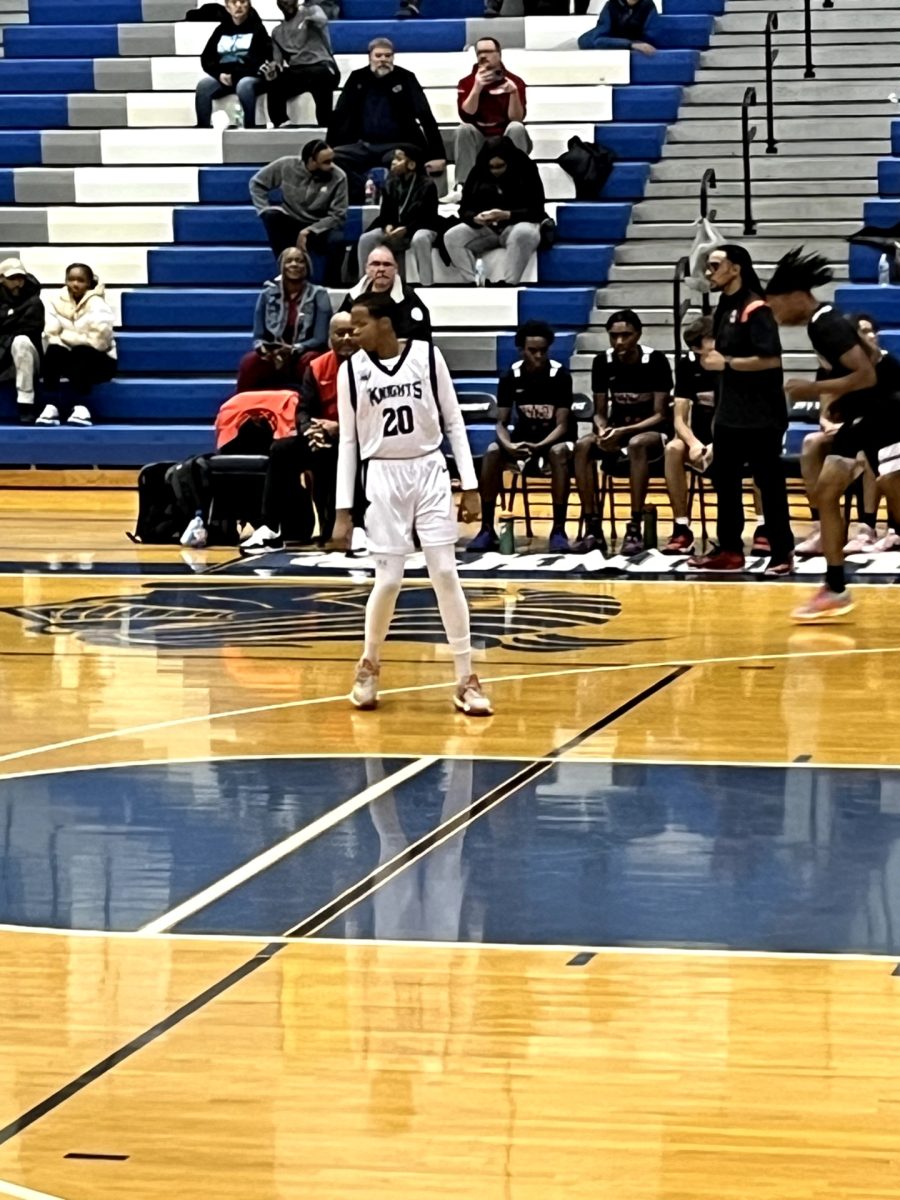There is a major split between common fashion in the Loy Norrix hallways and the Kalamazoo Public Schools Code of Conduct.
According to a portion of the dress code listed in the Norrix Parent/Student Handbook:
Loy Norrix High School student dress standards are as follows:
All top articles of clothing must extend downward and touch the top of your bottom articles, not exposing any skin or lower layers of clothing in the abdominal or lower back regions of the torso. All top articles of clothing exposing upper torso and arm skin must meet the following guidelines:
May not be an article of clothing meant to be an undergarment.
However, a quick stroll in the halls would confirm that students love their crop tops and either haven’t been dress-coded or have no intention of changing their style to fit school rules.
According to a survey of over 200 students, 90% of them have never been dress-coded while attending Loy Norrix.

But for junior Lilyanna Hostiguin, the dress code is a problem in her day-to-day life at school.
“I’ve been dress-coded four times this year,” Hostiguin said. “Last year it was a lot, maybe ten.”
This year, Assistant Principal Andrew Muysenberg has been the administrator who has dress-coded Hostiguin every time; although, any staff member or administrator, including teachers, can enforce the dress code.
“It’s not easy to handle because students react in different ways to it,” Muysenberg said. “Being a male and trying to redirect a female can be awkward.”
Many teachers avoid enforcing the dress code, except for the recent hats and hoods policy. According to a survey of 24 Norrix teachers, 75% of them do not feel comfortable dress-coding students.

There are many reasons for this lack of enforcement, as many teachers don’t feel comfortable dress-coding students they don’t know, and others don’t want to objectify young women or come across as inappropriate.
“As a male teacher, I am not comfortable telling a female student that her clothing is inappropriate for school,” English teacher Colby Cuppernull said.
English teacher Brianna English also doesn’t like to dress code students.
“It makes me focus on what they’re wearing rather than how they’re learning,” English said.
Students agree that being dress-coded is uncomfortable, and often feel that their educational time is being interrupted when they are disciplined about their clothing. Administrators who dress code encounter compliance from some students and dissent from others who are either angry about being told what to do or feel that they are being unfairly dress-coded.
“When I’m at school and I feel good about what I’m wearing, I do better and I’m focused,” Hostigun said. “When I get dress-coded, it ruins my day.”
Art teacher Luna Zuniga agrees and feels that dress codes target women.
“There seems to be this idea that a girl’s body is inherently sexual and will be distracting. There’s significantly more rules on how a girl should dress,” Zuniga said.
Assistant Principal and Dean of Students Stephanie Perry said that the most common violations of the dress code are hats and hoods, which aren’t supposed to be worn during the instructional day according to the Loy Norrix Code of Conduct. Another common violation is crop tops or undergarments being worn as tops.
In Hostigun’s experience, getting dress-coded for a crop top or revealing shirt is the main problem that administrators have, and it angers her that many other women in the school wear similar shirts without facing discipline.
“Everyone at school wears crop tops,” Hostigun said. “My friend was with me and the only difference was our chest size, and that’s what makes me upset.”

On one occasion that Hostigun was dress-coded, she was sent to Perry, who is available to discuss the dress code with women who would be more comfortable speaking to a female administrator rather than a male.
“I felt it was important to dig a little deeper into the situation,” Perry explained. “Sometimes when you’re out in the hallway, you don’t have time for that.”
From the administrator’s perspective, uneven enforcement of the school dress code is mainly due to the many behavioral issues that take precedence over a clothing infraction.
“When you’re in the hallways monitoring, you’re looking at hitting, running, pushing, you’re listening for language… you’re balancing a ton of stuff in a short amount of time,” Perry said.
However, administrators are open to student input and are willing to reassess how the rules are enforced based on student feedback.
If students have a problem with the dress code or feel they’ve been targeted by it, they should speak to Perry.
“I can bring it up into the consciousness of administrators so we can reflect and see if that’s the case,” Perry explained.
The administrators are responsible for ensuring that students adhere to the code of conduct, although they don’t create the rules. Both Perry and Muysenberg stress the importance of getting down to the bigger issue behind dress code infractions.
“We might have to connect them with Communities in Schools because that might be their only sweatshirt,” Muysenberg said.
While school administrators try their best to handle the situations, and students speak to staff members when they feel they’ve been wrongfully disrupted during school, the only way to change the dress code or the code of conduct is through the KPS Board of Education. Students can attend the regular board meetings and make their voices heard if they feel change is needed.










